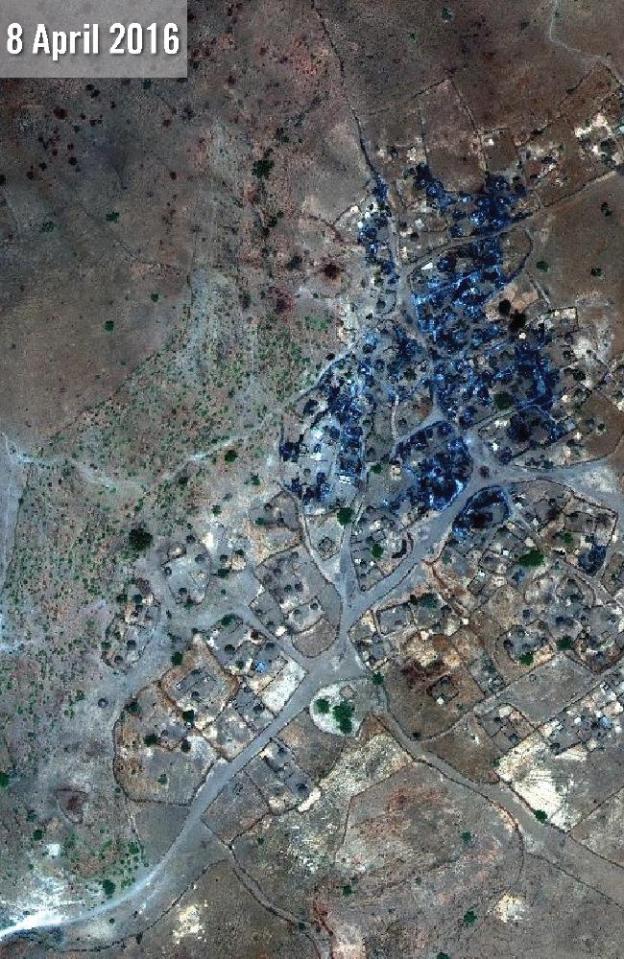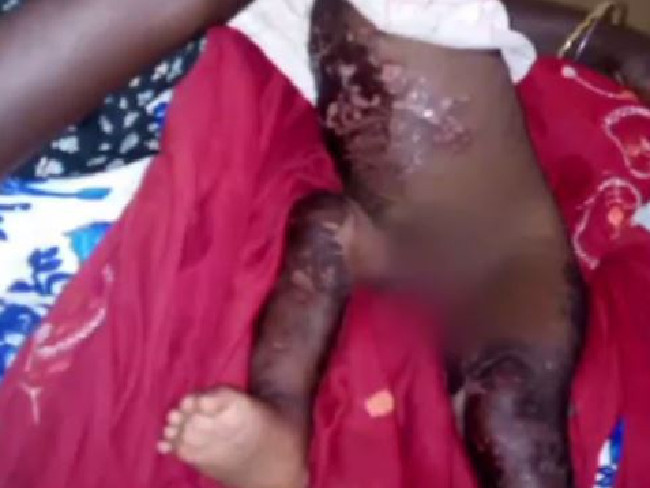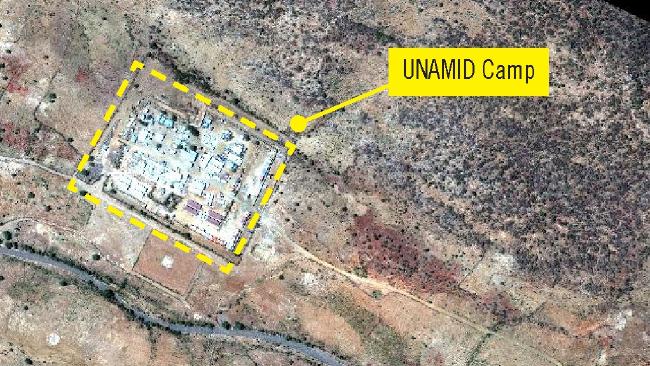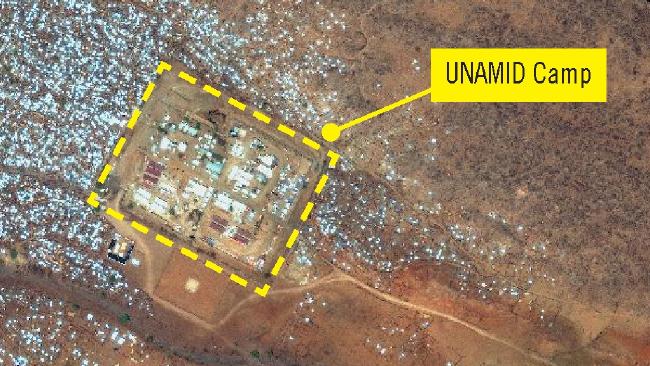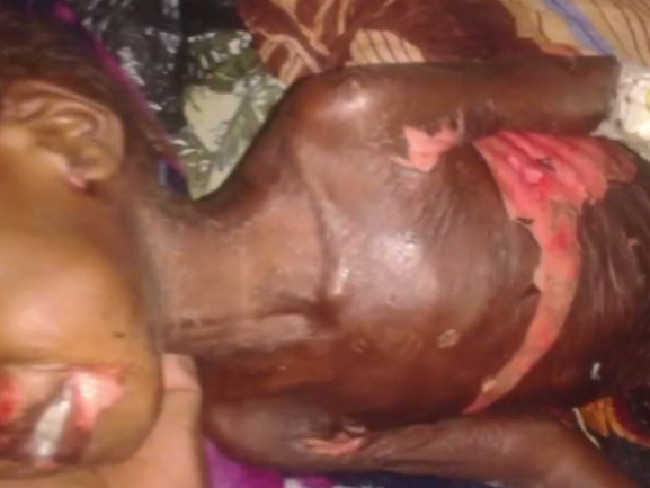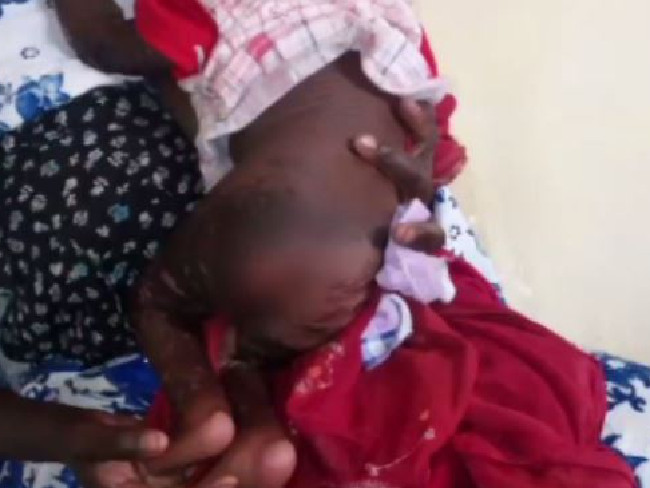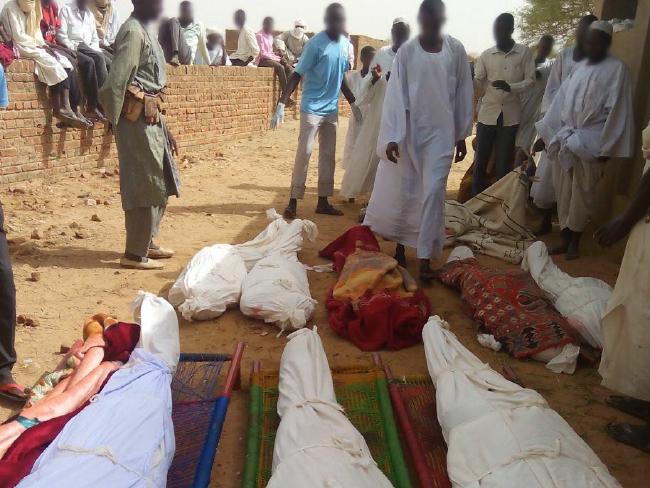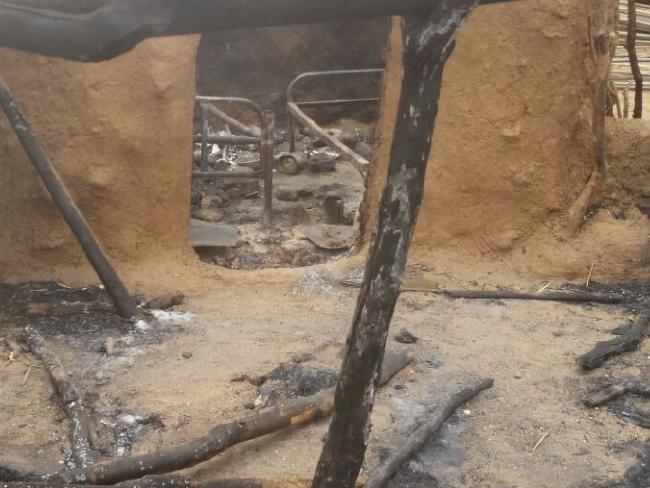Shocking satellite photos show how entire towns have been wiped out by horrific chemical attacks in Sudan’s Darfur region
Amnesty International says survivors describe horrific injures, including burns, blisters, and children vomiting blood

THESE are the startling images which show how entire towns have simply disappeared in Sudan’s troubled Darfur region.
Thousands of people have been left homeless and hundreds of others are either dead or left with horrific injuries and burns as a result of suspected chemical attacks by government forces against its own people. .
Amnesty International has revealed the result of an investigation into attacks on civilians in the remote Jebel Marra region of Darfur this year.
Its report – Scorched Earth, Poisoned Air – reveals how suspected chemical weapons have been repeatedly used in the area in 2016.
According to Amnesty, between 200 and 250 people are believed to have died as a result of the attacks – many of them very young children.
The organisation said it has gathered horrific evidence of repeated use of what are believed to be chemical weapons against civilians, by Sudanese government forces in one of the most remote regions of Darfur.
Its investigation indicates at least 30 likely chemical attacks have taken place in the Jebel Marra area since January 2016, the most recent of which took place this month.
Related stories
Amnesty’s director of crisis research Tirana Hassan said not much has changed in the 13 years since Sudan plunged into civil war, except this time the “world has stopped watching”.
“The scale and brutality of these attacks is hard to put into words,” she said.
“The images and videos we have seen in the course of our research are truly shocking.
“In one a young child is screaming with pain before dying.
“Many photos show young children covered in lesions and blisters.
“Some were unable to breath and vomiting blood.”
Tirana said it was hard to explain how cruel and devastating these weapons were when they came into contact with the human body.
She said it was for this reason that chemical weapons have been banned across the world.
Using satellite imagery, extensive interviews with victims and expert analysis, Amnesty also found how those who survived suffered horrendous injuries in the days after the attacks.
Horrific injuries
Victims suffered vomiting and diarrhoea, blisters, rashes on their skin which hardened or changed colour and fell off, as well as eye and breathing problems.
One woman, who was home with her children in the village of Burro when it was attacked, told Amnesty she saw several bombs discharge black smoke which then turned blue.
“Most of my kids are sick from the smoke of the bombardment,” she said.
“They got sick on the day of the attack. They vomited and they had diarrhoea.
“They were coughing a lot. Their skin turned dark like it was burned.”
Another man told Amnesty researchers he cared for dozens of people following what was believed to be a chemical attack and he had never seen injuries like it.
He said 19 of the people he helped care for had died within a month of being exposed to the bombs and all experienced shocking skin changes.
The man said half of those he helped had wounds that turned green, while others literally had their skin fall off.
It is understood the chemical weapons agents were delivered by bombs delivered by planes and rockets.
Survivors said they saw smoke being released once the bomb or rocket exploded and noticed it changed colour within minutes of being released. They also said it smelled noxious.
Amnesty, which was not allowed access into the region, presented its findings to two independent chemical weapons experts.
Both believed the injuries sustained in the photo evidence and damage sustained across the region could not have been caused by anything other than chemical weapons.
Country in crisis
Sudan was launched into civil war in 2003 when government forces were accused of oppressing the non-Arab population.
The civil war which followed gained worldwide attention and left hundreds of thousands of people displaced.
Amnesty said the world has stopped paying attention and atrocities are continuing to this day.
In January this year, Sudanese forces launched a large-scale military offensive in Jebel Marra against the Sudan Liberation Army/Abdul Wahid (SLA/AW) who they accuse of ambushing military convoys and attacking civilians.
Amnesty claims in the months following, government forces deliberately targeted civilians and civilian property with more than 170 villages destroyed in the ongoing military campaign.
“Scorched earth, mass rapes, killings and bombs — these are the same war crimes being committed in Darfur as in 2004 when the world first woke up to what was happening,” Tirana said.
“This region has been stuck in a catastrophic cycle of violence for more than 13 years.”
Amnesty has urged the UN Security Council to immediately investigate the latest atrocities and prosecute those suspected of being responsible.
We pay for your stories! Do you have a story for The Sun Online news team? Email us at [email protected] or call 0207 782 4368



